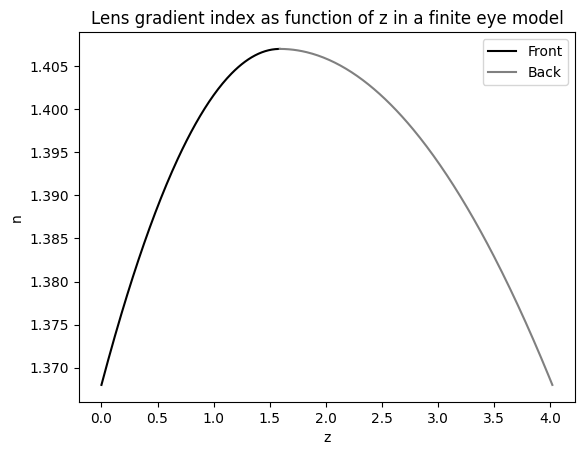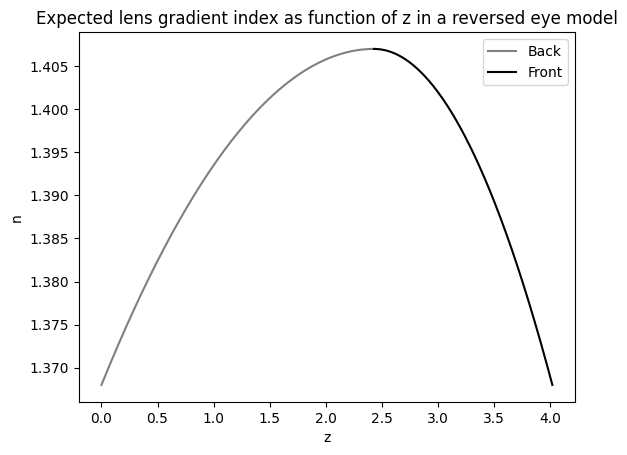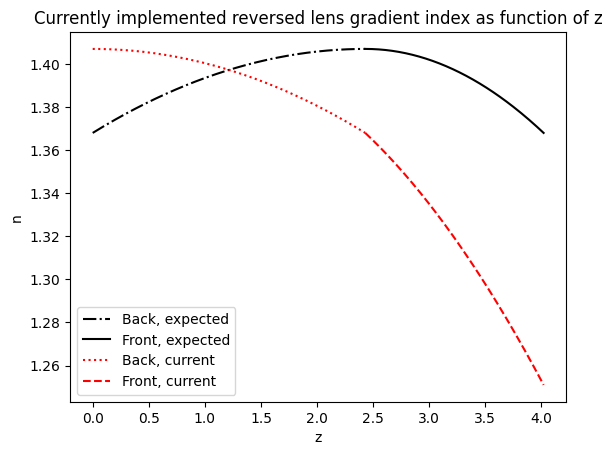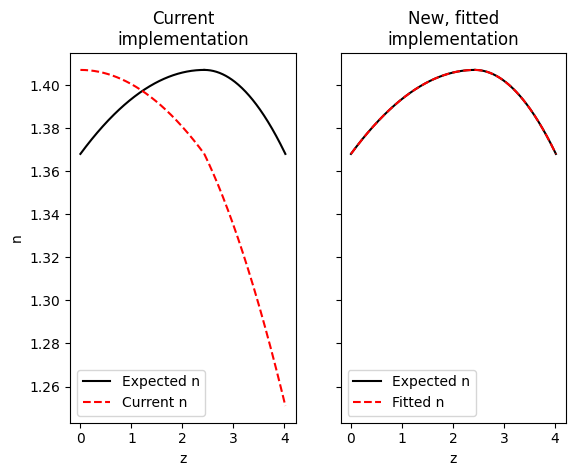We recently recreated the knowledgebase example Modelling of a Shack-Hartmann Sensor for eye aberration evaluation using ZOSPy, and added it as an example. While doing so, we noticed an error in the knowledgebase example.
The example uses a reversed eye with the object located at the retina. This model is a reversed verion of the eye model used in How to model the human eye in OpticStudio. The reversed eye however seems to have an incorrect gradient index for the crystalline lens. We have shown the specifics here, together with a convenient method to correctly invert a Gradient3 gradient use a simple fitting algorithm. In short, the error can be shown using a few plots:
The original gradient of How to model the human eye in OpticStudio
The original gradient plotted as function of the z-axis

The expected reversed gradient
When reversing the eye model, it is expected that the reversed gradient becomes:

The current reversed gradient of Modelling of a Shack-Hartmann Sensor for eye aberration evaluation
Currently, the gradient of the reversed eye is not equal to the expected reversed gradient:

The new, fitted, reversed gradient
We obtained the correct gradient using a simple fit, as outlined here and created an updated version of the example here:

I hope we can update the knowledgebase example to correct this error. I would also propose to update the example slightly, as it does not mention some important features that are used, such as setting surface apertures or adjusting the PhysicalOpticsData of a surface.

